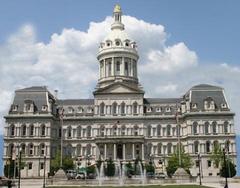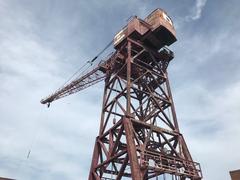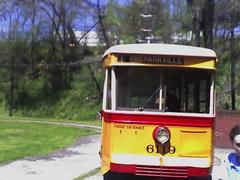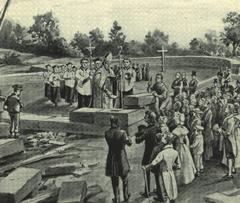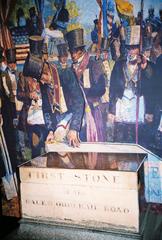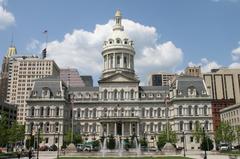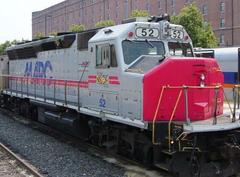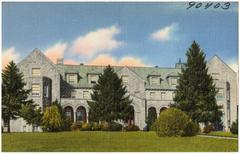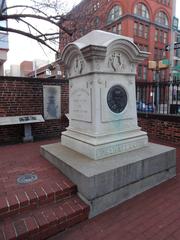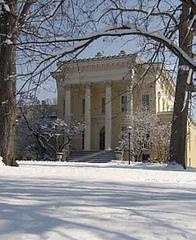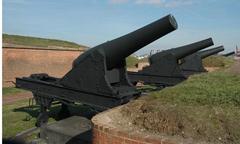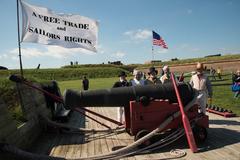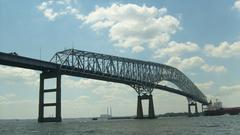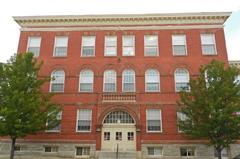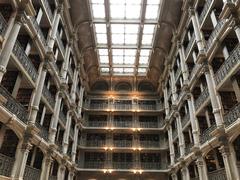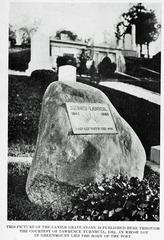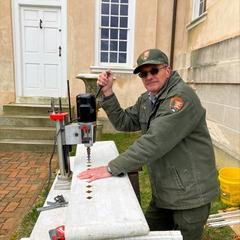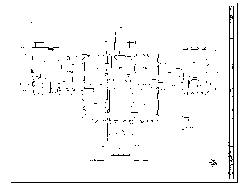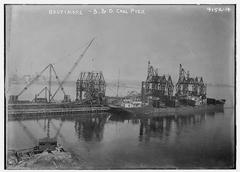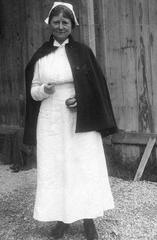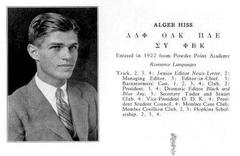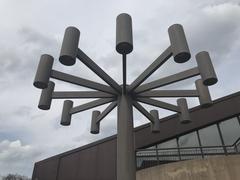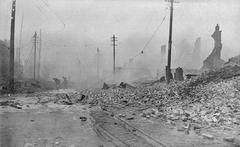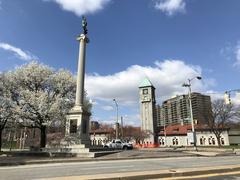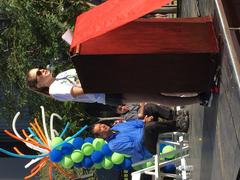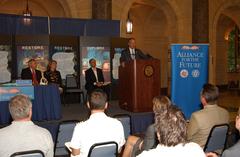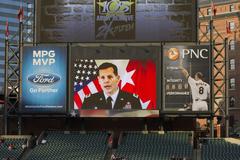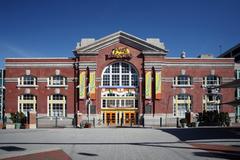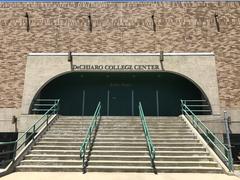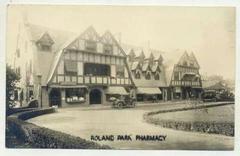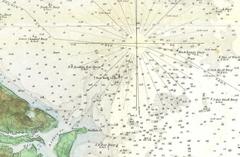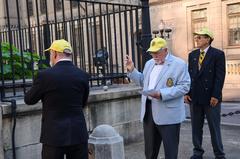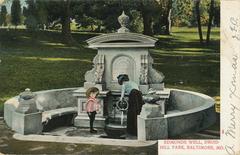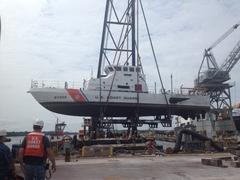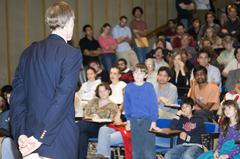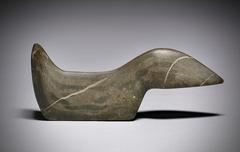
Loudon Park Cemetery Baltimore Visiting Hours, Tickets, and Visitor Guide
Date: 04/07/2025
Introduction: History and Significance
Loudon Park Cemetery, founded in 1853 in Baltimore, Maryland, stands as a remarkable intersection of Victorian garden cemetery design, Civil War remembrance, and community heritage. Its rolling landscape, mature trees, and striking monuments provide a peaceful retreat while telling the story of Baltimore’s evolving social, cultural, and military legacy. Loudon Park is especially notable for its dual role as both a public cemetery and the site of one of the nation’s original national cemeteries, reflecting Baltimore’s—and Maryland’s—divided loyalties during the Civil War (Loudon Park Cemetery History; National Cemetery Administration; Baltimore Heritage).
The grounds are the final resting place of important figures such as philanthropist Enoch Pratt, entrepreneur Johns Hopkins, pioneering surgeon William S. Halsted, and Mary Young Pickersgill, the creator of the Star-Spangled Banner flag (Enoch Pratt Biography; Johns Hopkins History; Star-Spangled Banner History).
Loudon Park welcomes the public daily, offering free admission, wheelchair accessibility, ample parking, and opportunities for guided and self-guided exploration. Its proximity to key Baltimore attractions makes it a central destination for cultural tourism and historical education.
Table of Contents
- Introduction: History and Significance
- Founding and Early Development (1853–1900)
- Civil War Significance and Military Burials
- Notable Burials and Monuments
- Visiting Loudon Park Cemetery: Hours, Tickets & Accessibility
- Travel Tips and Nearby Attractions
- Community and Cultural Role
- Preservation Efforts and Recent Developments
- Frequently Asked Questions (FAQ)
- Visitor Recommendations and Resources
- Sources
Founding and Early Development (1853–1900)
Established on land owned by the Loudon family, the cemetery was created during a period when the rural cemetery movement was changing American attitudes toward memorialization and public green space. Landscape designers laid out park-like grounds with winding paths, inviting mourners and visitors to reflect and find solace amid nature (Loudon Park Cemetery History). By the late 19th century, Loudon Park had become a prominent burial ground, mirroring Baltimore’s growth and diversity.
Civil War Significance and Military Burials
In 1861, the federal government acquired a portion of Loudon Park to establish a national cemetery for Union soldiers. This 5.2-acre section holds over 2,300 Union graves, with a separate Confederate section nearby containing about 650 soldiers—an enduring representation of Maryland’s divided Civil War allegiances (National Cemetery Administration; Baltimore Heritage).
The cemetery features memorials such as the Confederate Soldiers’ Monument (1870) and the Grand Army of the Republic Memorial, as well as monuments to unknown soldiers and Maryland’s naval personnel.
Notable Burials and Monuments
Loudon Park is the final resting place of numerous notable individuals:
- Enoch Pratt (1808–1896): Philanthropist and library founder (Enoch Pratt Biography).
- Johns Hopkins (1795–1873): Founder of Johns Hopkins University and Hospital (Johns Hopkins History).
- Mary Young Pickersgill (1776–1857): Sewed the Star-Spangled Banner flag (Star-Spangled Banner History).
- William S. Halsted (1852–1922): Renowned surgeon and educator.
Victorian-era mausoleums, the Maryland Sons Monument, and other significant memorials enrich the landscape. The Confederate Soldier Monument by Adalbert Volck, as well as memorials to unknown dead and naval personnel, further highlight the cemetery’s commemorative depth (Dying to Tell Their Stories; Baltimore Heritage).
Visiting Loudon Park Cemetery: Hours, Tickets & Accessibility
Hours and Admission
- Public Hours: Daily, 8:00 AM to 6:00 PM (some sections may have seasonal variations; check official site).
- Admission: Free. No tickets required for general entry.
Accessibility and Parking
- Parking: Free and available near the main entrance.
- Wheelchair Access: Paved paths and accessible restrooms in the visitor center. Some areas have uneven ground; call ahead for assistance.
- Public Transit: The cemetery is accessible via local bus routes and by car.
Guided Tours
- In-person Tours: Offered seasonally through Baltimore Heritage and the cemetery office.
- Virtual Tours: Available online for remote visitors.
Travel Tips and Nearby Attractions
Nearby Sites:
- Baltimore Museum of Industry
- Maryland Zoo in Baltimore
- Fort McHenry National Monument
- Baltimore Museum of Art
- Federal Hill Park
Practical Tips:
- Wear comfortable shoes and bring water.
- Use online databases (e.g., Find a Grave) to locate specific graves.
- Allow 1–2 hours for an in-depth visit.
Community and Cultural Role
Loudon Park Cemetery continues to serve as a space for public commemoration and education. Annual Memorial Day and Veterans Day ceremonies attract visitors and descendants. Community groups and volunteers are active in preservation, gravestone restoration, and digitization of burial records, keeping the cemetery’s history accessible (Preservation Maryland; Loudon Park Online Search).
The cemetery’s monuments and layout reflect broader debates about Civil War memory, race, and reconciliation—a legacy that remains relevant in contemporary dialogue (Baltimore Heritage).
Preservation Efforts and Recent Developments
Ongoing maintenance is supported by partnerships with local organizations and grant funding. Initiatives include improved signage, expanded accessibility, and the launch of digital tools such as an online burial search and virtual tours (Preservation Maryland; Loudon Park Online Search).
Frequently Asked Questions (FAQ)
Q: What are Loudon Park Cemetery’s visiting hours?
A: Daily, 8:00 AM to 6:00 PM. Hours may vary on holidays or for special events.
Q: Is there an admission fee?
A: No, admission is free to all visitors.
Q: Is the cemetery wheelchair accessible?
A: Yes, with paved paths and accessible facilities. Some areas may be more difficult to access; contact the office for assistance.
Q: Are guided tours available?
A: Yes, seasonally in person and virtually online.
Q: Can I take photographs?
A: Yes, but please be respectful, especially during services.
Q: Is parking available?
A: Yes, free on-site parking is provided.
Q: Are pets allowed?
A: Only service animals are permitted.
Visitor Recommendations
- Plan your visit with online grave location tools (Find a Grave).
- Dress appropriately for uneven terrain.
- Join a guided tour for deeper historical insights.
- Bring water and sun protection.
- Respect all posted rules and the solemn nature of the grounds.
Contact and Further Resources
- Address: 3620 Wilkens Avenue, Baltimore, MD 21229
- Phone: 410-368-5033
- Official Website: www.loudon-park.com
- Online Burial Search: Loudon Park Online Search
For additional information, event updates, and self-guided audio tours, download the Audiala app or follow Loudon Park Cemetery and Baltimore Heritage on social media.
Summary
Loudon Park Cemetery is a living archive of Baltimore’s history—a peaceful sanctuary for reflection and a profound site of remembrance. Its Civil War legacy, notable burials, and striking monuments make it an essential destination for visitors seeking to understand the city’s complex past and present. Ongoing preservation, accessibility enhancements, and community engagement ensure its stories remain vivid for generations to come (Baltimore Heritage; Dying to Tell Their Stories).
Sources
- Loudon Park Cemetery History
- National Cemetery Administration
- Baltimore Heritage
- Enoch Pratt Biography
- Johns Hopkins History
- Star-Spangled Banner History
- Baltimore Heritage Tours
- Preservation Maryland
- Loudon Park Online Search
- Dying to Tell Their Stories
For images, interactive maps, and up-to-date event details, visit the official Loudon Park Cemetery website and Audiala app.





